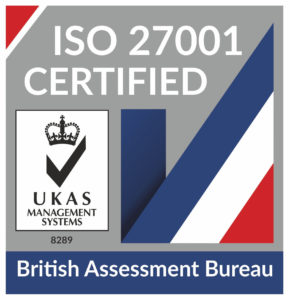
HaloITSM Guides
Documentation to assist with the setup and configuration of the HaloITSM platform
Improve Search Using AI
In this guide we will cover:
- What is AI search?
- Connecting to Azure OpenAI
- Configure Azure AI search
- Using AI search
What is AI search?
Search functionality in Halo, including searching for tickets, knowledge base articles, and services, can be enhanced with Azure AI Search. By leveraging AI, Azure AI Search delivers more accurate results by analysing the context and underlying concepts of the content, rather than relying solely on keyword matching. This functionality is particularly useful for the virtual agents functionality, as it allows AI agents to provide responses to users based on content from knowledge base articles. In this guide we will cover how to set up Azure AI search and how it can be used.
Prerequisites
- Default AI connection must be Own Azure OpenAI connection.
Connecting to Azure OpenAI
It is important to make sure your Azure tenant is setup to support the Azure AI area, it may be disabled. If this is the case, please contact Microsoft to get Azure AI enabled for your tenant. There are multiple models which you can deploy in the Azure AI area, so the possibilities are extensive when configuring your own models (AI Models).
For the setup of an Azure OpenAI model in Azure (Not Azure AI Search) check out this video by Mendy at Rising Tide Consulting.
Configure Azure AI search
Head to Configuration > AI > AI Knowledge Search in Halo. Select Azure AI search as your "Vector search database", then hit "Configure Connection", here you will need to enter your connection details.
Fig 1. AI knowledge search setup in Halo.
Fig 2. Credential required for Azure AI search.
Obtaining Azure AI search Credentials
To obtain the credentials required for the Azure AI Search Integration, you must go to the Azure AI portal on Microsoft Entra and then "Azure AI Services" from here you can create an model for AI Searching.
Fig 3. Azure AI Services.
Within this service you can create a different type of model called an AI Search model. If you do not have the Azure AI search module available yet you will need to configure Azure AI Search within the Azure Admin Console. Please refer to the following Microsoft Documentation https://learn.microsoft.com/en-us/azure/search/search-create-service-portal on how to do this.
Fig 4. AI search model.
After creating the model, navigate to the overview tab and you will notice a URL field, this is the endpoint to use in the configuration input within Halo. Clicking into the JSON view on the overview page, you can find the API Version to input into Halo.
Fig 5. Endpoint URL for Azure AI search.
Under the 'Keys' tab you can obtain the API key required.
Fig 6. API key.
You can now enter these credentials into Halo to connect.
Fig 7. Completed credentials for Azure AI search.
Indexing Articles/Services
Once configured, the indexing of all articles and services currently in the database can be scheduled. When articles and services are created, edited or deleted, the search indexes in Azure AI Search are automatically updated with the embeddings in the background. But for historical articles/services to be indexed you can schedule this using the 'Index articles' and 'Index Service Catalogue' button.
When manually running indexing you may receive a pop-up stating it is scheduled to run at a certain time.
Fig 8. Index scheduling pop-up.
You can force the initial indexing by going to Configuration > Advanced Settings > Backend Service Monitoring > "Automation Log" tab > filter to "Upcoming".
Fig 9. Automation log.
Right click on the indexing row that will appear in the table and then click "Retry".
Fig 10. Retry (indexing) automation.
Using AI Search
The search screen then allows you to do an AI search using the AI button in the search bar. When active, all filters are cancelled and search as you type is disabled, and the search becomes text only. An embedding is created for the search term, and an AI similarity search is run in Azure AI Search. The match score is also shown in the results.
Fig 11. AI search in search bar
For example searching for "Signing In" doesn't return any search results when I do not have AI search enabled.
Fig 12. Searching with AI search disabled
When enabling Azure AI Search, more results are returned, the similarity score is also visible underneath the article views. These particular articles have been returned as they meet the minimum vector match score with the search prompt.
Fig 13. Searching with AI search enabled.
The main use case for this functionality is the Virtual Agent feature, which use Azure AI Search to search the knowledge base for answers to users' queries. Virtual Agents can be used without Azure AI Search, but there will be limitations with the search results. For more information on using virtual agents see our dedicated guide here.
If the article suggestions are not displaying in the problem resolution finder, please enable the AI Insights within the ticket types forms tab:
Fig 14. Enabling the AI Insights Tab
Popular Guides
- Asset Import - CSV/XLS/Spreadsheet Method
- Call Management
- Creating a New Application for API Connections
- Creating Agents and Editing Agent Details
- Departments and Teams
- Halo Integrator
- Importing Data
- Multiple New Portals with different branding for one customer [Hosted]
- NHServer Deprecation User Guide
- Organisation Basics
- Organising Teams of Agents
- Step-by-Step Configuration Walk Through



